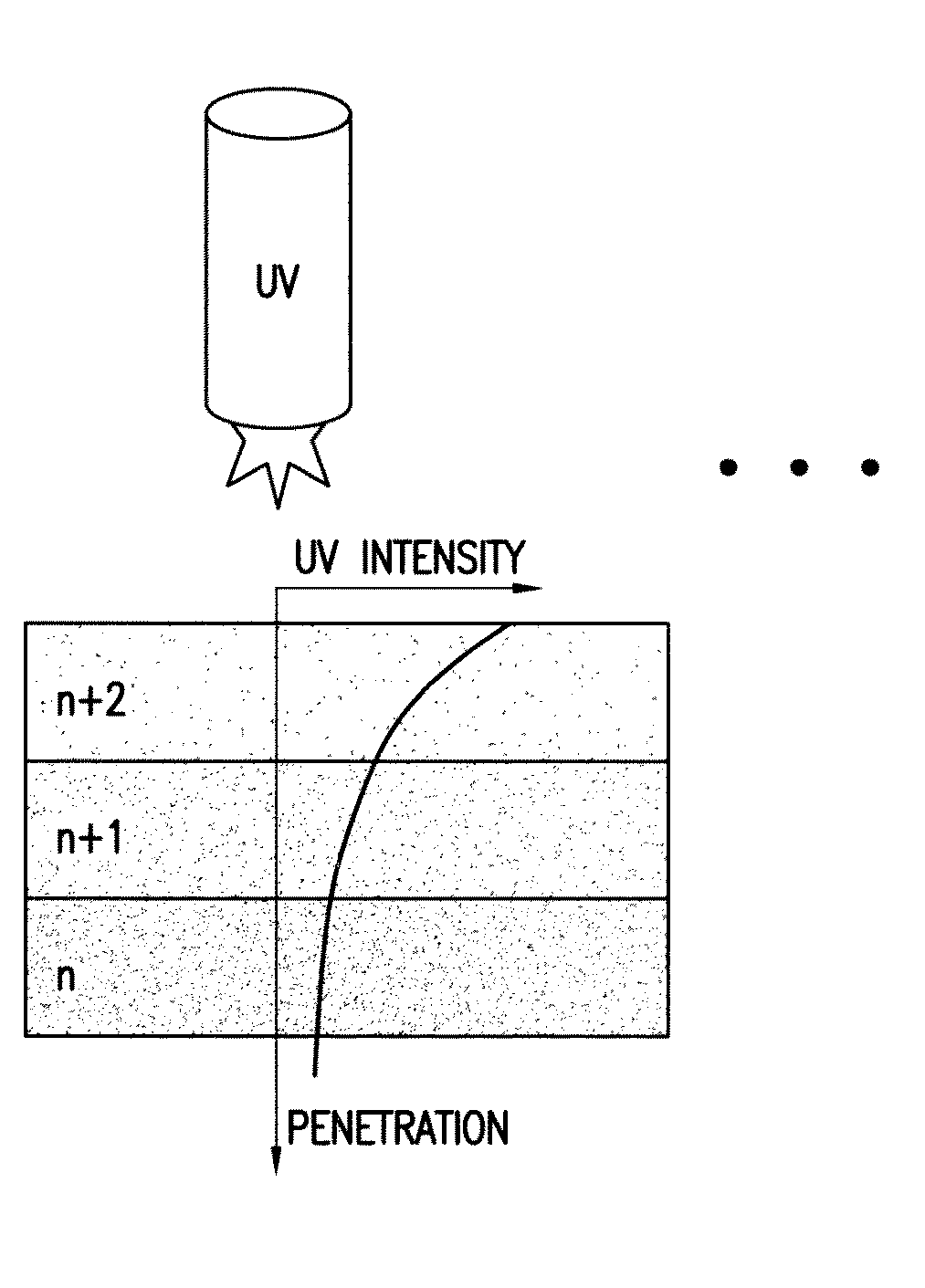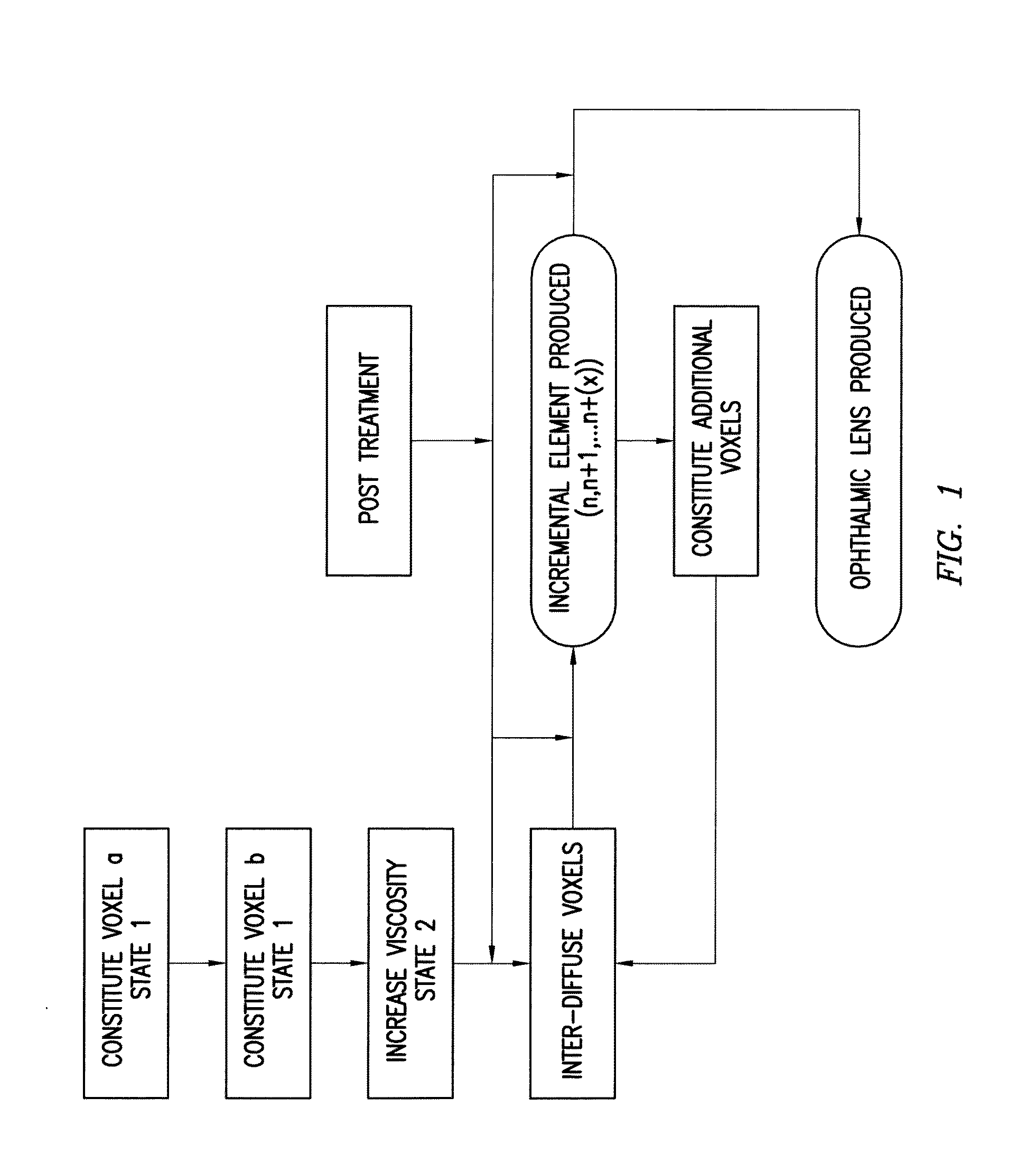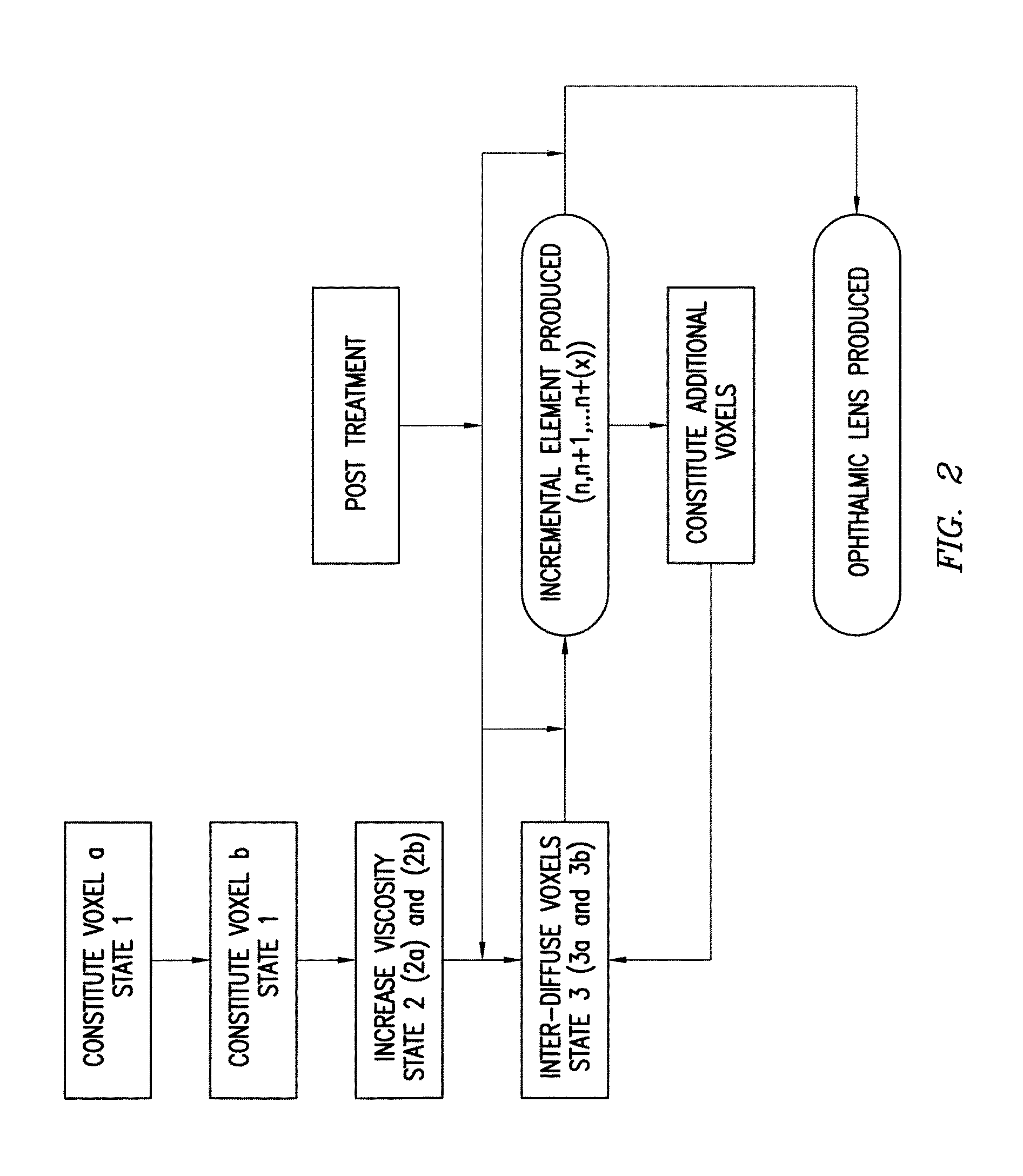Additive manufacturing for transparent ophthalmic lens
a manufacturing method and ophthalmic lens technology, applied in the field of additive manufacturing of three-dimensional transparent ophthalmic lenses, can solve the problems of insufficient application of such manufacturing methods, increased risk of generating some defects, and difficulty in managing the homogeneity of the final product, so as to improve the ability to inter-diffuse and high homogeneity management level
- Summary
- Abstract
- Description
- Claims
- Application Information
AI Technical Summary
Benefits of technology
Problems solved by technology
Method used
Image
Examples
example 1
Increase Viscosity by UV Cross-Linking / Spontaneous Inter-Diffusion / Post-Treatment by UV Cross-Linking
[0235]In one example, the following method is used to manufacture a three-dimensional transparent ophthalmic lens comprising the following steps, each steps of this method being numbered in accordance with claim 2:
[0236] / 1 / —constitute a first voxel of a liquid composition (A), at a state 1a, comprising a mixture of at least: a) an epoxy aliphatic monomer and / or oligomer, or an epoxy silane monomer and / or oligomer; b) an acrylic monomer and / or oligomer; and c) a cationic photoinitiator; The composition preferably consists of multi-epoxy functional glycidyl ethers and a combination of di-, tri- and tetra-functional acrylates and more preferably consists of a mixture of trimethylolpropane triglycidyl ether, sorbitol polyglycidyl ether, 1,4 butanediol diacrylate, pentaerythritol triacrylate, and triaryl sulfonium hexafluoroantimonate as cationic photoinitiator.
[0237] / 3 / —increasing the vi...
example 2
Increase Viscosity by UV Cross-Linking / Inter-Diffusion by Heat Treatment / Post-Treatment by UV Cross-Linking
[0251]In another example, the following method is used to manufacture a three-dimensional transparent ophthalmic lens comprising the following steps:
[0252]1. constitute a first voxel of a liquid composition (A), at a state 1a, comprising a mixture of at least: a) an epoxy silane or a prepolymer of an epoxysilane, preferentially 3-glycidoxypropyltrimethoxysilane; and b) a cationic photo-initiator preferentially a triarylsulfonium metal salt and more preferably triarylsulfoniumhexafluorophosphate;
[0253]2. increasing viscosity of the first voxel by exposing it to UV radiation, thereby: a) partially cross-linking the epoxy group and; b) hydrolyzing the methoxysilane group with acid generated during photolysis of the cationic photo-initiator to obtain a liquid composition to a state 1b;
[0254]3. repeating steps 1 and 2 with new voxels of the liquid composition (A), at a state 1a, the...
example 3
Increase Viscosity by Evaporation / Inter-Diffusion by Heat Treatment / No Post-Treatment
[0258]In another example, the following method is used to manufacture a three-dimensional transparent ophthalmic lens comprising the following steps:[0259]1. constitute a first voxel of a liquid composition (A), at a state 1a, comprising a viscous fluid of at least a thermoplastic polymer preferentially polymethylmethacrylate dissolved in an appropriate solvent, preferentially anisole or ethyl lactate and more preferably, ethyl lactate;[0260]2. flashing-off by evaporation, preferentially using microwave, a sufficient amount of the solvent, resulting in a stable first voxel, in a state 2a, with viscosity between 5 times to 20 times the viscosity in state 1a, to substantially maintain its geometry during later steps;[0261]3. constitute a new voxel of same liquid composition (A) used to step. 1 adjacent to the first voxel;[0262]4. inter-diffuse said voxels by partially dissolving the first voxel using ...
PUM
| Property | Measurement | Unit |
|---|---|---|
| size | aaaaa | aaaaa |
| wavelength | aaaaa | aaaaa |
| glass transition temperature | aaaaa | aaaaa |
Abstract
Description
Claims
Application Information
 Login to View More
Login to View More - R&D
- Intellectual Property
- Life Sciences
- Materials
- Tech Scout
- Unparalleled Data Quality
- Higher Quality Content
- 60% Fewer Hallucinations
Browse by: Latest US Patents, China's latest patents, Technical Efficacy Thesaurus, Application Domain, Technology Topic, Popular Technical Reports.
© 2025 PatSnap. All rights reserved.Legal|Privacy policy|Modern Slavery Act Transparency Statement|Sitemap|About US| Contact US: help@patsnap.com



